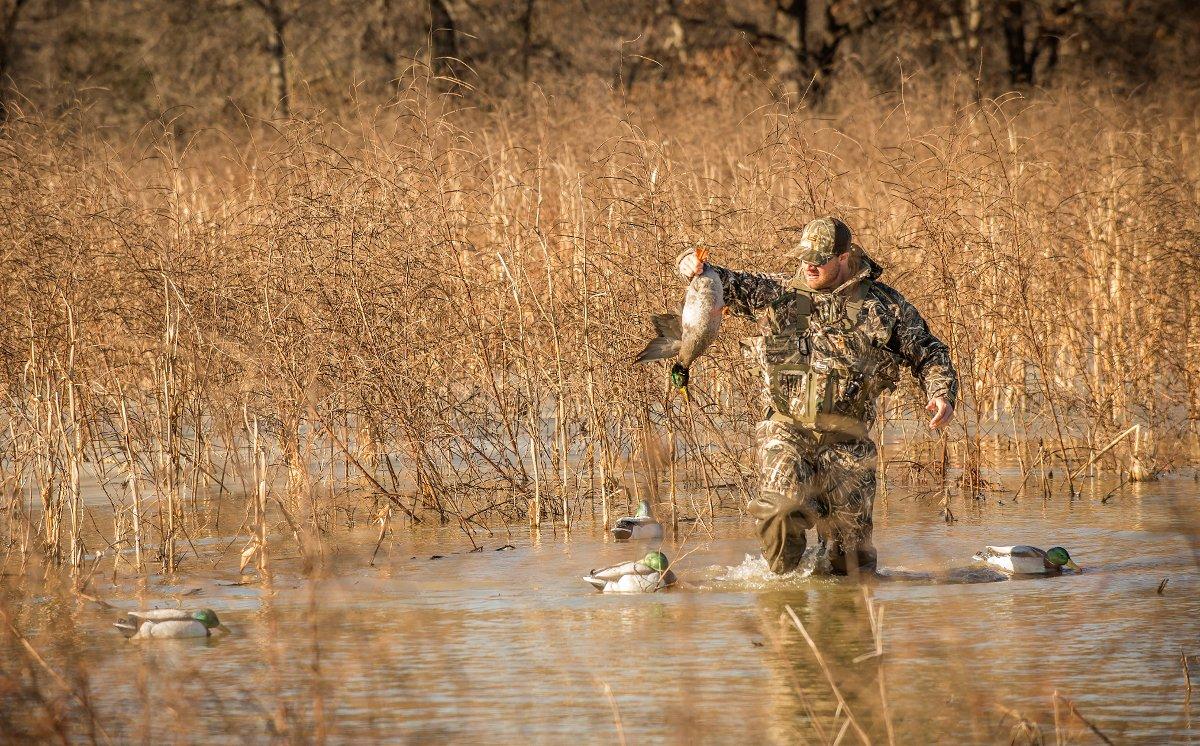Goose, Mallard Hunting Restricted Starting Next Year
Atlantic Flyway hunters will have to settle for fewer mallards and honkers on their straps beginning in Fall 2019.
On Oct. 16 and 17, the U.S. Fish and Wildlife Service approved Atlantic Flyway Council recommendations to reduce the flyway's daily mallard limit to two, only one of which can be a hen, for the 2019-'20 season.
Further, the agency limited Canada goose seasons in Atlantic Population zones to only 30 days, with a limited harvest. Three states — Delaware, Maryland and Virginia — will have one-goose daily limits, and the rest of the flyway's Atlantic population areas will have two-bird limits. In a press release, Delta Waterfowl said the move was prompted by poor 2018 reproduction and a 30 percent in Atlantic population Canadas in the most recent breeding population survey.
Atlantic Flyway biologists estimate it was the worst Atlantic population Canada goose production in 22 years, John Devney, Delta's senior vice president, said in the release. The collaborative Atlantic population banding effort accounted 30 juveniles for the 3,000 geese banded. That is abysmal.
The release said the 2018 Atlantic population estimate was about 155,000 birds, which is higher than the threshold for conservative regulations. However, the poor production pushed the Flyway Council to react.
Unlike most ducks, Canadas generally have lower reproduction potential, and there is a relationship between hunter harvest and survival, Devney said in the release. So, with an estimate that's close to the edge with poor production on top of that, it's appropriate for the Flyway Council to be cautious. Nobody wants to revisit the days when there was a moratorium on Canada goose hunting on the Delmarva Peninsula.
The mallard limit, meanwhile, was a response to a long-term issue, as reported in a recent Realtree.com article. Population surveys indicate Northeastern breeding mallards have decreased about 20 percent since 1998 and remain about 32 percent lower than the long-term average, even though they increased by about 7 percent in the 2018 survey.
Originally, the Flyway Council proposed a daily limit of two mallards, both of which could be hens. Delta, however, advocated a three-mallard/one-hen limit, which, it said, would provide more hunter opportunity while reducing adult hen mortality. Ultimately, USFWS surveys indicate that Atlantic Flyway hunters favored restricting the bag to one hen per day.
The Atlantic Flyway will retain a 60-day season in 2019-'20, the release said, as determined by a multi-stock harvest model used for the first time. Previously, Atlantic Flyway season lengths and bag limits were set using a mallard-based model, as in other flyways. Now, however, the flyway's frameworks will be based on the aggregate population status of four critical species: goldeneyes, wood ducks, ring-necked ducks and green-winged teal.
If you looked at the estimate of breeding mallards and breeding mallard habitat in the Central Flyway in a given year, it'd be pretty descriptive for all prairie-nesting ducks, Devney said in the release. But mallards are a less appropriate surrogate for the habitat and breeding biology of the important Eastern ducks considered in the multi-stock harvest strategy.
The release said Delta believes the multi-stock model will be better long-term for hunters.
Click here for more Realtree waterfowl hunting content. And check us out on Facebook.








